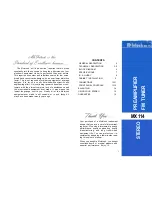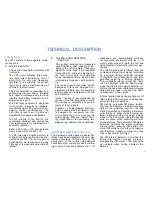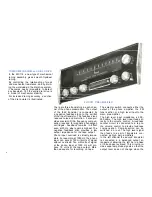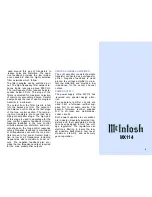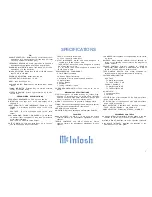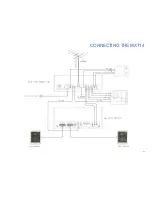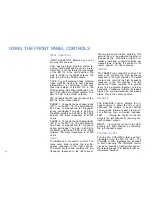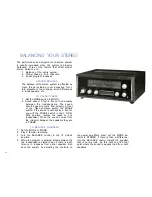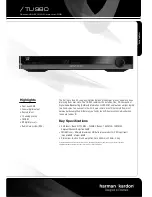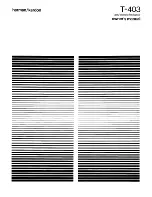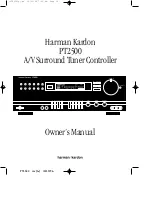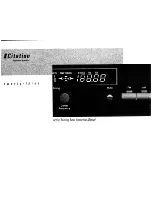
used around this pair of transistors to
reduce noise and distortion. The nega-
tive feedback provides the low imped-
ance needed to drive the highly selective
filter networks which follow.
The filter networks can be switched in or
out. The high-frequency filter network re-
duces treble response above 5000 Hz.
The low-frequency filter reduces bass re-
sponse below 50 Hz. The slope of the
filters is selected for maximum rejection
of commonly encountered noise. Careful
design keeps the loss of usable program
material to a minimum.
The output from the filter circuits is fed
into the balance control. The output of
the balance control drives the first stage
of the tone control section. The remain-
ing two transistors are connected as a
high-gain amplifier stage. The high-gain
of this stage is used to advantage for the
tone control negative feedback circuits.
Negative feedback in the tone control
circuits assures low distortion and accu-
rate shape on the tone-control response
curves. Negative feedback is maintained
at all frequencies, even with the tone con-
trols turned to full boost. Overall distor-
tion is low at all frequencies including
frequencies where maximum boost oc-
curs. The negative feedback also pro-
vides the low impedance output required
for the main preamplifier outputs.
CENTER
CHANNEL AMPLIFIER
The L + R amplifier consists of a single
transistor connected as a voltage am-
plifier. Negative feedback is used
around the voltage amplifier to main-
tain low distortion and provide a low
impedance for the center channel
output.
POWER SUPPLY:
The power supply of the MX 114 has
received very special design atten-
tion.
Two separate rectifier circuits are
used. First, a full-wave rectifier sup-
plies D.C. to all audio circuits. The
second full-wave rectifier supplies
D.C. to all tuner and multiplex-de-
coder circuits.
Both power supplies are very elabor-
ate in design. Specially selected tran-
sistors and their associated circuits
have been designed to form two volt-
age regulators. The regulators use
electronic filtering to insure the low-
est possible background hum level,
maximum stability, and extremely
good regulation.
MX 114
5
5


